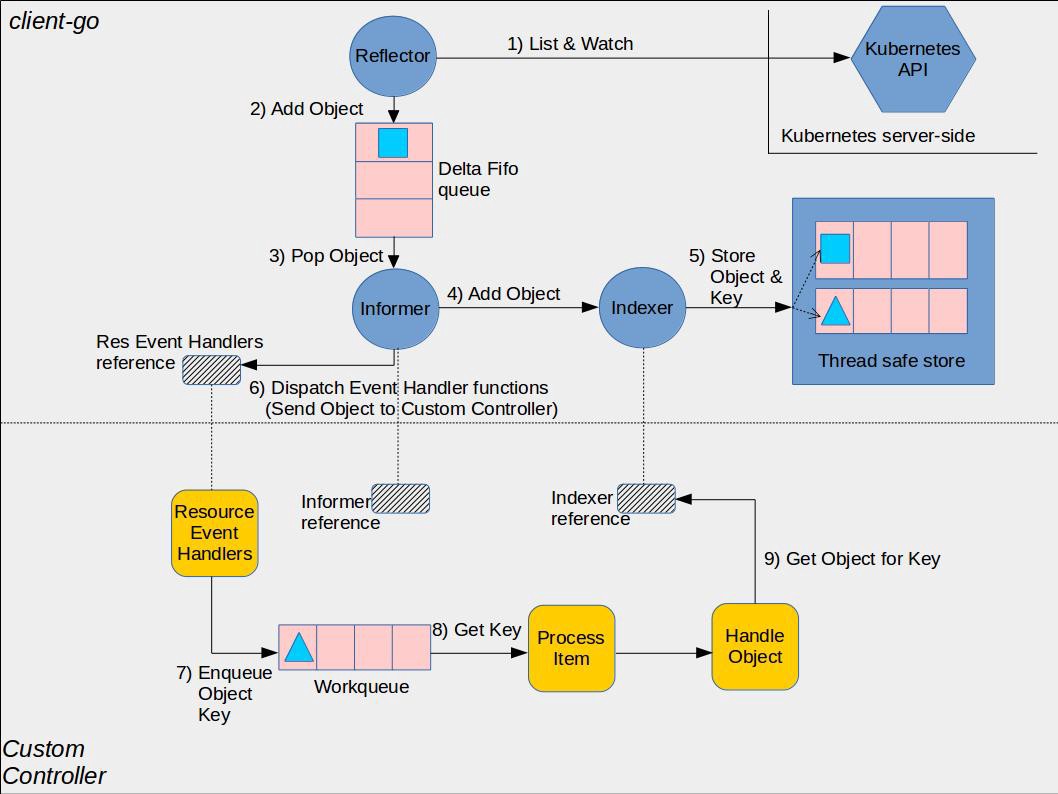# README
RestStrategy Controller
Custom Controller used to listen to changes on a specific object (CRD -> RestStrategy)
Everytime a set of changes is done on the types a client needs to be regenerated and unit tests updated.
Useful resources
Kubernetes maintained sample-controller repo is a great reference.
Includes the below image, highlighting the area of responsibility between the client (client-go in this case the most mature, and best suited for concurrency) and user code (custom controller)

Helper resources
Debug controllers video
A VSCode launch.json is shared in the controller dir.
Notes
Build locally and test in cluster.
docker build --build-arg REVISION=abcd1234 --build-arg VERSION=0.6.2 -t ghcr.io/dnitsch/reststrategy:0.6.2 .
Deployment
Run in minikube - installation instructions here.
You can deploy just the CRD when testing changes and run controller locally and have updated kubecontext e.g.:
"args": [
"--kubeconfig",
"${env:HOME}/.kube/config",
"--controllercount",
"2",
"--namespace",
"reststrategy",
"--loglevel",
"debug"
]
Secret Token
As Part of the orchstrator it does a token replace before calling the relevant service endpoint
This way we are not storing secrets in etcd and calling a
kubectl describe reststrategywill only fetch back token from the CRD stored in ETCD.
The controller is using the configmanager to perform token replacement, so if you are running in EKS/AKS/GKE - it is highly recommended you store any secrets in the Cloud provided secrets storage like AWS SecretsManager and ensure your deployment of the controller has valid pod identity to be able to perform the relevant retrieve operation.
e.g. in AWS secretsmanager:GetSecret
Unit testing
To generate a JUNIT style report we are using this package
sample usage see >> Makefile
go test ``go list ./... | grep -v */generated/`` -coverprofile .coverage